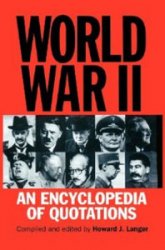Marshall, Thurgood (1908-1993) civil rights lawyer, associate justice of the Supreme Court Thurgood Marshall was the first black justice to serve on the U. S. Supreme Court.
Born on July 2, 1908, in Baltimore, Maryland, Marshall attended an all-black public school, and then went on to the integrated Lincoln University in Pennsylvania where he received his undergraduate degree with honors in 1930. After being turned down by the Maryland School of Law because he was black, Marshall applied to and was accepted by the Howard University School of Law, a predominately black institution in Washington, D. C. In 1933, Marshall graduated, and in the same year he was admitted to the Maryland Bar.
Marshall’s first venture into law came when he opened his own practice in Baltimore. Taking primarily the civil rights cases of those who could not afford a lawyer, he did not make much money in his early years of practice. He later had the opportunity to defend a black student attempting to gain admission to the University of Maryland School of Law, the same school that had earlier rejected Marshall. He won the case.
The National Association eor the Advancement Of Colored People (NAACP) noticed Marshall’s activities. In 1936, Marshall accepted the position as NAACP lawyer and assistant counsel, and later he became chief counsel. He and his staff began a lengthy effort to overturn the 1896 judicial ruling of Plessy v. Ferguson, which mandated separate facilities for blacks and whites, as long as they were equal. To that end, he set up the NAACP Legal Defense and Education Fund, which aimed at working though the courts to have SEGREGATION, particularly in schools, declared illegal.
During his time with the NAACP, Marshall argued many cases. In 1950, he won two Supreme Court cases involving graduate schools. In Sweatt v. Fainter, the Court ruled that a black law school could not be inferior to a segregated white law school in the same area and still meet the test of constitutionality. The second case, McLaurin v. Oklahoma State Regents, ruled that a school could not accept a student, and then confine him or her to certain areas on the basis of race. Marshall defended minorities throughout the United States, preparing cases in Missouri and the University of Texas where blacks were excluded from juries. Meanwhile, he challenged discrimination in other areas as well. During and after World War II, he was an outspoken opponent of the government detention of Japanese Americans, and in 1951, he traveled to Japan and South Korea to investigate the mistreatment of blacks by white southern officers and the unfair practices of military courts trying blacks.
In 1954, Marshall and his staff took on their most important and influential case in Brown v. Board of Education. The Supreme Court headed by Earl Warren ruled unanimously that “separate educational facilities [were] inherently unequal,” overturning the “separate but equal” doctrine of the 1896 decision in Plessy v. Ferguson. This victory gave children the right to attend desegregated public schools. This victory made Marshall a national figure. With the Democrats in the control of the White House, Marshall made it known he wanted a judgeship.
On September 23, 1961, after eight months in office, President John F. Kennedy appointed Marshall to the U. S. Court of Appeals for the Second Circuit, serving New York. There was a one year delay before he could take up the position for numerous southern white senators did all they could to block the appointment. During his tenure as a federal appellate judge, Marshall wrote 150 opinions and presided over many cases in which the Supreme Court reversed none of his 98 majority decisions. Some of his more important decisions included finding loyalty oaths required of New York teachers unconstitutional, limiting the authority of immigration officials to summarily deport aliens, and enforcing the Fourth and Fifth Amendments in cases of illegal search and seizure and double jeopardy.
In 1965, President Lyndon B. Johnson appointed Marshall to the post of solicitor general of the United States. This entailed representing the government in cases before the Supreme Court. Marshall won 14 out of 19 cases. His most important achievement came in the Miranda v. Arizona decision, which required police to inform suspects of their rights.
In 1967, Johnson nominated Marshall to the Supreme Court. Even with stiff opposition from the president’s own

Thurgood Marshall, NAACP chief counsel, before the Supreme Court, 1958 (Library of Congress)
Democratic Party, he was confirmed by a Senate vote of 69 to 11. On October 2, 1967, Marshall was sworn in and took his seat. He became the first black to sit on the bench, and the first justice from Maryland since Chief Justice Roger B. Taney. Marshall served for 24 years on the bench before his retirement in 1991. On January 24, 1993, he died in Bethesda, Maryland.
Further reading: Randall Walton Bland, Private Pressure on Public Law: The Legal Career of Justice Thurgood Marshall, 1934-1991 (Lanham, Md.: University Press of America, 1993); Michael D. Davis and Hunter R. Clark, Thurgood Marshall: Warrior at the Bar, Rebel on the Bench (Secaucus, N. J.: Carol Publishing Group, 1992); Mark V. Tushnet, Making Civil Rights Law: Thurgood Marshall and the Supreme Court, 1936-1961 (New York: Oxford University Press, 1994).
—Robert A. Deahl




 World History
World History









